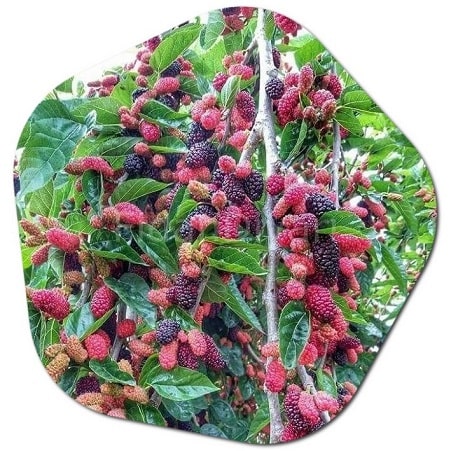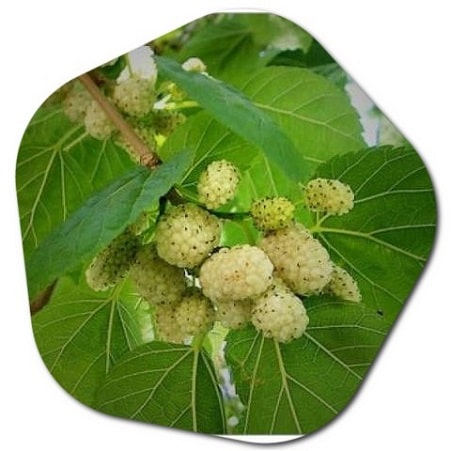Where do mulberry trees grow in the US?
Mulberry trees (Morus spp.) are native to North America and can be found growing in various regions across the United States. They generally prefer temperate climates and can be found in both wild and cultivated settings. Here are some common areas where mulberry trees can be found in the US:
- Eastern United States: Mulberry trees are widespread throughout the eastern states, including areas such as New England, the Mid-Atlantic, and the Southeast. They can be found in states like New York, Pennsylvania, Virginia, North Carolina, and Florida.
- Midwest: Mulberry trees are also found in the central and Midwestern states, including Illinois, Indiana, Ohio, Missouri, and Kansas.
- Southern United States: Mulberry trees thrive in the southern states due to the favorable climate. They can be found in states like Texas, Louisiana, Mississippi, Alabama, and Georgia.
- Western United States: While mulberry trees are more commonly found in the eastern and southern regions of the US, they can also be found in certain parts of the West. In states such as California, Oregon, and Washington, you may find mulberry trees in specific regions or cultivated landscapes.
Mulberry trees are adaptable and can grow in a range of soil types, as long as the conditions are suitable for their growth. They tend to prefer full sun or partial shade and thrive in areas with well-drained soil.
Do mulberry trees grow in the US?

Yes, mulberry trees (Morus spp.) do grow in the United States. They are native to North America and can be found growing in various regions across the country. Mulberry trees are known for their ability to adapt to different climates and soil conditions, which allows them to thrive in diverse environments. They are commonly found in the eastern, southern, and central parts of the United States. Mulberry trees can be seen growing in both wild and cultivated settings, and they are valued for their edible fruit and ornamental qualities. Where do mulberry trees grow in America? >>
Where does a white mulberry tree grow in the USA?
White mulberry trees (Morus alba) are not native to the United States, but they have been introduced and naturalized in many parts of the country. They are known to grow in a wide range of environments, including urban areas, suburban landscapes, and rural settings. White mulberry trees are particularly adaptable and can be found in various regions across the United States, including:
Eastern United States: White mulberry trees can be found in the eastern states, such as New York, Pennsylvania, New Jersey, Virginia, North Carolina, and Florida.
Midwest: White mulberry trees are also present in the central and Midwestern states, including Illinois, Indiana, Ohio, Missouri, and Kansas.
Southern United States: In the southern states, white mulberry trees can be found in Texas, Louisiana, Mississippi, Alabama, Georgia, and other states with suitable growing conditions.
Western United States: While white mulberry trees are not as common in the western regions of the United States, they can still be found in certain areas, particularly in urban and suburban landscapes.
White mulberry trees are adaptable and can thrive in a variety of soil types and climates. They are known for their tolerance to different growing conditions and can establish themselves in both rural and urban environments. However, it’s worth noting that white mulberry trees are considered invasive in some parts of the United States, as they can spread rapidly and outcompete native plant species.
What month does a mulberry tree bear fruit in the USA?
The exact month when mulberry trees bear fruit can vary depending on the specific variety of mulberry and the location within the United States.

Generally, mulberries start to bear fruit in late spring to early summer, typically from May to July. However, the fruiting period can extend or shift slightly depending on factors such as climate, local weather conditions, and the specific cultivar of mulberry tree.
In warmer regions with an early spring, mulberry trees may start producing fruit as early as late April or early May. In cooler regions or higher elevations, the fruiting may be delayed until June or July. It’s important to note that mulberries do not ripen all at once but over a period of several weeks, allowing for an extended harvest window.
It’s recommended to consult local gardening resources, agricultural extension offices, or experienced gardeners in your specific region for more precise information about when mulberry trees bear fruit in your area.
Characteristics of mulberry fruit in the United States
Mulberry fruit in the United States, regardless of the specific variety, typically possesses the following characteristics:
- Appearance: Mulberries are small to medium-sized berries that can vary in color depending on the variety. Common colors include black, dark purple, red, or white. White mulberries are more common in the United States.
- Texture: The texture of mulberries is typically juicy and succulent, similar to other berries. The fruit has a delicate, thin skin that surrounds the juicy pulp.
- Flavor: Mulberries have a sweet and slightly tart flavor. The taste can vary between different varieties, with some being sweeter and others more tangy. They are often described as having a rich, berry-like taste.
- Size: Mulberries can range in size from around half an inch to an inch in length, depending on the variety. The berries are typically small and relatively delicate.
- Nutritional Content: Mulberries are known to be rich in nutrients, including vitamins C and K, iron, potassium, and dietary fiber. They are also a good source of antioxidants.
- Harvesting: Mulberries are generally harvested when they are fully ripe, as they do not ripen significantly once picked. The berries are delicate and can bruise easily, so care is needed during harvesting.
Mulberries can be eaten fresh or used in various culinary preparations, such as pies, jams, jellies, smoothies, and desserts. They are highly perishable and are best consumed soon after picking or refrigerated for a short period.
How to prune a mulberry tree in America?
Pruning a mulberry tree in America follows similar principles to pruning other fruit trees. Here are some general guidelines for pruning a mulberry tree:
- Timing: Prune mulberry trees during the dormant season, preferably in late winter or early spring before new growth begins. This allows the tree to heal quickly and minimizes stress.
- Remove Dead or Diseased Branches: Start by identifying and removing any dead, damaged, or diseased branches. These branches can be pruned back to the point of healthy wood or all the way to the trunk.
- Thinning: Mulberry trees tend to have a dense canopy, so thinning out some of the branches can improve air circulation and light penetration. Remove any crossing or rubbing branches, as well as those growing inward toward the center of the tree. Aim to maintain an open and balanced canopy.
- Size Control: If necessary, prune back the branches to control the size of the tree. You can selectively prune branches to reduce the height, width, or overall size. However, avoid severe pruning as it can stress the tree and affect fruit production.
- Pruning Cuts: Make clean cuts just above a bud or lateral branch junction. Avoid leaving stubs as they can invite disease and decay. Use sharp, clean pruning tools to make smooth cuts.
- Fruit-Bearing Branches: Mulberry trees typically bear fruit on one-year-old wood. Encourage fruit production by selectively retaining younger branches that have the potential to bear fruit.
- Training: Consider the desired shape and form of the mulberry tree as you prune. Prune branches that are growing in unwanted directions and encourage growth in the desired shape, such as a central leader or an open vase form.
It’s important to note that specific pruning techniques may vary depending on the specific variety of mulberry tree, its growth habit, and the desired outcomes. If you’re unsure or dealing with a mature or large mulberry tree, it may be beneficial to consult with a professional arborist or a local horticultural expert for guidance. Mulberry tree fruit in America >>





